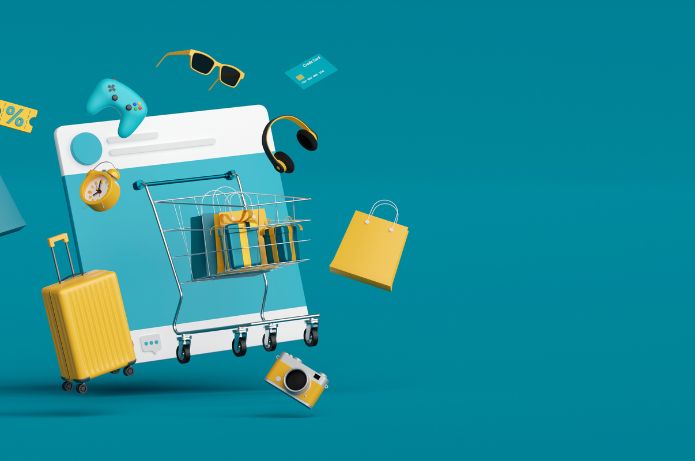Definition of Artificial Intelligence:
Artificial Intelligence (AI) is a branch of computer science that focuses on creating systems and machines capable of performing tasks that typically require human intelligence.This includes learning, problem solving, pattern recognition, natural language understanding, and decision making. AI seeks not only to mimic human behavior, but also to improve and surpass human capabilities in certain tasks.
History of AI:
The concept of AI has been around since the 1950s, with the pioneering work of scientists such as Alan Turing and John McCarthy. Over the decades, AI has gone through several cycles of optimism and” “invernos, periods of lower interest and funding.However, in recent years, due to advances in computational power, data availability, and more sophisticated algorithms, AI has experienced a significant renaissance.
Types of AI:
1. Weak (or Narrow) AI: Designed to accomplish a specific task.
2. Strong (or General) AI: Able to perform any intellectual task a human being can do.
3. Super AI: Hypothetical AI that would surpass human intelligence in every respect.
AI Techniques and Subfields:
1. Machine Learning: Systems that learn from data without being explicitly programmed.
2. Deep Learning: An advanced form of machine learning using artificial neural networks.
3. Natural Language Processing (NLP): Allows machines to understand and interact using human language.
4. Computer Vision: Allows machines to interpret and process visual information.
5. Robotics: Combines AI with mechanical engineering to create autonomous machines.
Artificial Intelligence Applied to E-commerce:
E-commerce, or e-commerce, refers to the purchase and sale of goods and services over the internet. The application of AI in e-commerce has revolutionized the way online businesses operate and interact with their customers.Let's explore some of the main applications:
1. Customization and Recommendations:
AI analyzes browsing behavior, purchase history, and user preferences to deliver highly personalized product recommendations.This not only improves the customer experience, but also increases the chances of cross-selling and upselling.
Example: Amazon's recommendation system, which suggests products based on the user's purchase history and views.
2. Chatbots and Virtual Assistants:
AI-powered chatbots can provide 24/7 customer support by answering frequently asked questions, assisting with site navigation, and even processing requests.
Example: The Sephora virtual assistant, which helps customers choose beauty products and provides personalized recommendations.
3. Demand Forecasting and Inventory Management:
AI algorithms can analyze historical sales data, seasonal trends, and external factors to predict future demand with greater accuracy.This helps companies optimize their inventory levels, reducing costs and avoiding product overruns or shortages.
4. Dynamic Pricing:
AI can adjust prices in real time based on demand, competition, available inventory and other factors, maximizing revenues and competitiveness.
Example: Airlines use AI to constantly adjust ticket prices based on a variety of factors.
5. Fraud Detection:
AI systems can identify suspicious patterns in transactions, helping prevent fraud and protect both customers and businesses.
6. Customer Segmentation:
AI can analyze large volumes of customer data to identify significant segments, enabling more targeted and effective marketing strategies.
7. Search Optimization:
AI algorithms improve search functionality on e-commerce sites by better understanding user intentions and providing more relevant results.
8. Augmented Reality (AR) and Virtual Reality (VR):
AI combined with AR and VR can create immersive shopping experiences, allowing customers to virtually experiment with” products before purchasing.
Example: The IKEA Place app, which allows users to view how furniture would look in their homes using AR.
9. Sentiment Analysis:
AI can analyze customer reviews and evaluations to understand feelings and opinions, helping companies improve their products and services.
10. Logistics and Delivery:
AI can optimize delivery routes, predict delivery times, and even assist in the development of autonomous delivery technologies.
Challenges and Ethical Considerations:
While AI offers numerous benefits for e-commerce, it also presents challenges:
1. Data Privacy: The collection and use of personal data for personalization raises privacy concerns.
2. Algorithmic Bias: AI algorithms may inadvertently perpetuate or amplify existing biases, leading to unfair recommendations or decisions.
3. Transparency: The complexity of AI systems can make it difficult to explain how certain decisions are made, which can be problematic in terms of consumer trust and regulatory compliance.
4. Technology Dependency: As companies become more reliant on AI systems, vulnerabilities may arise in the event of technical failures or cyber attacks.
5. Employment Impact: Automation through AI can lead to the reduction of certain functions in the e-commerce sector, although it can also create new types of jobs.
Future of AI in E-commerce:
1. Custom Shopping Wizards: More advanced virtual assistants that not only answer questions but proactively assist customers throughout the purchasing process.
2. Hyper-Custom Shopping Experiences: Product pages and online store layouts that dynamically adapt to each individual user.
3. Predictive Logistics: Systems that anticipate customer needs and pre-position products for ultra-fast delivery.
4. Integration with IoT (Internet of Things): Smart home devices that automatically place orders when supplies are low.
5. Voice and Image Purchases: Advanced voice and image recognition technologies to facilitate purchases through voice commands or photo uploads.
Conclusion:
Artificial Intelligence is profoundly transforming the e-commerce landscape, offering unprecedented opportunities to improve the customer experience, optimize operations and drive business growth.As technology continues to evolve, we can expect even more revolutionary innovations that will redefine the way we buy and sell online.
However, it is crucial for e-commerce companies to implement AI solutions in an ethical and responsible manner, balancing the benefits of technology with protecting consumer privacy and ensuring fair and transparent practices.Future success in e-commerce will depend not only on the adoption of advanced AI technologies, but also on the ability to utilize them in a way that builds long-term customer trust and loyalty.
As we move forward, integrating AI into e-commerce will continue to blur the lines between online and offline commerce, creating increasingly seamless and personalized shopping experiences.Companies that can effectively harness the power of AI, while carefully navigating the associated ethical and practical challenges, will be well positioned to lead the next era of e-commerce.











